February 2, 2023 feature
This article has been reviewed according to Science X's editorial process and policies. Editors have highlighted the following attributes while ensuring the content's credibility:
fact-checked
peer-reviewed publication
trusted source
proofread
Interaction-free, single-pixel quantum imaging with undetected photons
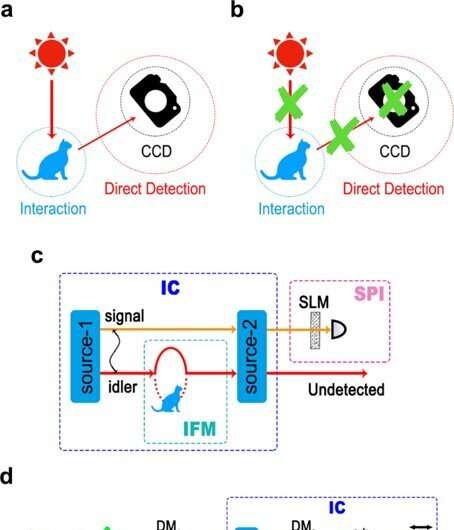
To capture an image of an object, a photographer typically requires a source of light interacting and scattering away from that object of interest, and a method to detect the light being scattered away from that object, as well as a detector with spatial resolution. These ingredients of photography are limiting in biological/sensitive specimen imaging however, due to the absence of photon-starved detection capabilities that can damage the specimen during interactions.
In a new report published in npj Quantum Information, Yiquan Yang and a research team in physics and solid-state microstructures in China proposed and experimentally realized a quantum imaging protocol that alleviated all three requirements. They accomplished this by embedding a single-photon Michelson interferometer into a nonlinear interferometer by harnessing single-pixel imaging methods. The work showed interaction-free, single-pixel quantum imaging of a structured object with undetected photons.
The research pushes the boundaries of quantum imaging to a point where no interactions were required between the object and photons to pave a new path to characterize delicate samples with single-pixel imaging at silicon-detection wavelengths.
The new quantum imaging protocol
In recent decades, quantum physicists have developed several imaging protocols based on quantum technology that have expanded the applications of optical imaging. Examples include ghost imaging, quantum imaging with undetected photons and interaction-free measurements. For instance, during quantum ghost imaging, researchers must correlate entangled photon pairs for two-photon coincident measurements. This can be realized with classical intensity-fluctuation correlations.
In contrast to modern digital photography, single-pixel imaging uses a sequence of masks to interrogate the scene alongside correlated intensity measurements of a single-pixel detector. In this work, Yang and colleagues sought to develop and demonstrate a quantum imaging protocol, which alleviated the needs of typical imaging.
They accomplished this by combining interaction-free measurements (IFM), single-pixel imaging (SPI) and an induced coherence interferometer. These first-in-study research outcomes highlight quantum imaging capabilities where the illuminating photon and detected photon do not interact with the object. As a result, this novel imaging protocol can characterize fragile or photon-sensitive systems, including biological tissues and quantum states of atomic ensembles. The scientists used economic, low-noise and high-efficiency single photon detectors for long-wavelength, interaction-free imaging.
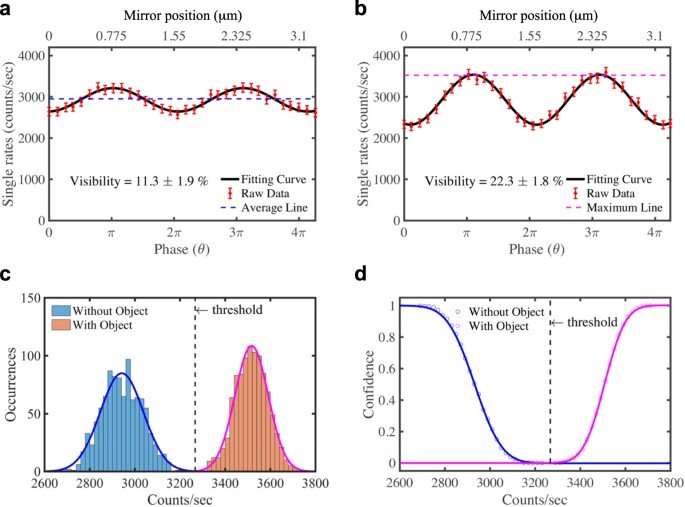
The experimental method
Yang and colleagues developed an experimental setup containing three main parts, which included the induced coherence interferometer, the interaction-free measurement interferometer, and the single pixel imaging module. They used a lithium niobate crystal as the nonlinear crystal and included a variety of dichroic mirrors to separate and combine frequency non-degenerate photons. The entire experimental setup enabled the formation of the quantum interferometer facilitated by induced coherence. During the experiment, the team generated an idler photon from the forward spontaneous parametric down-conversion process reflected by the dichroic mirror and injected into the interaction-free measurement module realized by a Michelson interferometer.
Since a single photon is indivisible due to its particle property and cannot split on a beam splitter, the idler photons that returned to the induced coherence interferometer were unlikely to have propagated through an interaction-free measurement module and therefore unlikely to have interacted with the object. The scientists accomplished single-pixel imaging with the signal photon in the single-pixel imaging module by reconstructing the multi-pixel image by interrogating that image with spatially resolved masks to simultaneously record and correlate the intensity with a single pixel detector. The team mathematically described the image as I = P. T., where I represented the pixelated image, while P was a set of masks and T a collection of correlated photon counts of the corresponding mask set.
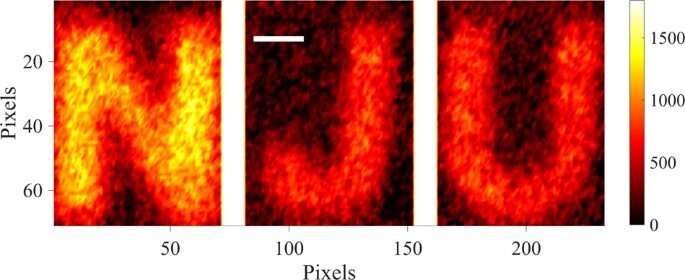
Quantum sensing
During the first step of the experiment, the team realized interaction-free quantum sensing with undetected photons by inserting an opaque object into the interaction-free measurement module. The visibility of the module was high in the absence of the object; this imperfection allowed the idler photon to return to the induced coherence interferometer with a low probability. Ideally, the visibility of signal interference was expected to be zero. In practice, the researchers used the maximum fitted counts of the induced coherence interference to denote successful detection of the object with interaction-free measurements and obtained the average counts to denote the absence of the object. The single counts of the signal photon thus provided a method to decide if or not the object was present in the interaction-free measurement module without interacting with it.
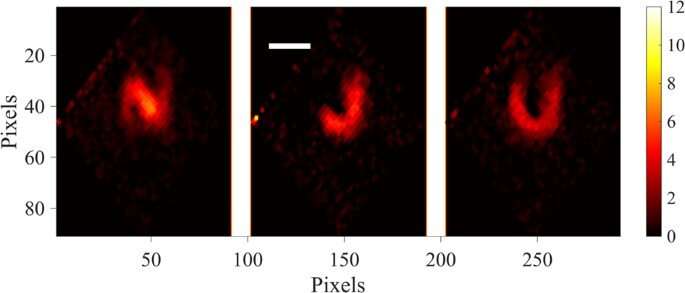
Quantum imaging
The team then realized interaction-free imaging with undetected photons. To accomplish this, they used an intensified CCD camera to image a partially structured object in the form of a 3D printed logo of the Nanjing University. In this instance, regions on the logo with characters were transparent, while complementary regions were opaque. The character and remaining regions corresponded to the absence/presence of the object and to different interference visibilities. The scientists used the methods presented herein to perform interaction-free imaging with undetected photons on a CCD camera to ultimately obtain a reconstructed image of the 3D printed NJU logo.
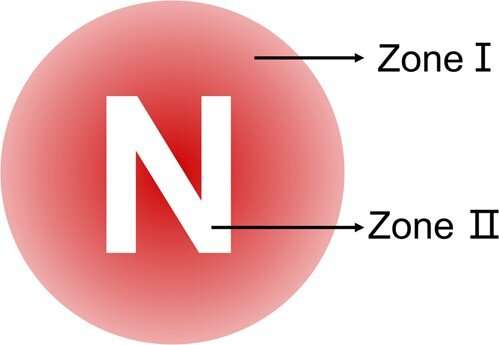
Outlook
In this way, Yiquan Yang and colleagues demonstrated interaction-free, single-pixel quantum imaging with undetected photons in a fundamentally different manner to typical digital imaging. The scientists harnessed the wave-particle duality of single photons to perform interaction-free imaging with probe photons. During the experiments, based on the induced coherence, the image information carried by the idler photons did not interact with the object and were transferred to the signal photons. The team reconstructed the image of an object of interest via a sequence of signal-photon counts that were detected by a visible single-photon detector without spatial resolution. The illuminating photon and the probe photon did not interact physically with the object, thereby pushing the capabilities of quantum imaging beyond the typical imaging processes.
This method will benefit life scientists and physicists alike to probe and image sensitive biological specimen and nanomaterials. The team envision this outcome will stimulate wider research interests across multi-disciplinary fields.
More information: Yiquan Yang et al, Interaction-free, single-pixel quantum imaging with undetected photons, npj Quantum Information (2023). DOI: 10.1038/s41534-022-00673-6
Barreto Lemos et al, Quantum imaging with undetected photons, Nature (2014). DOI: 10.1038/nature13586
Journal information: Nature
© 2023 Science X Network




















